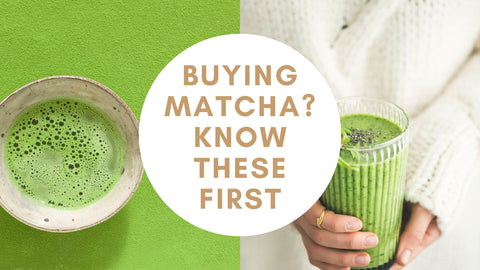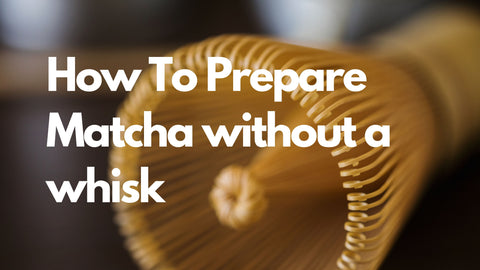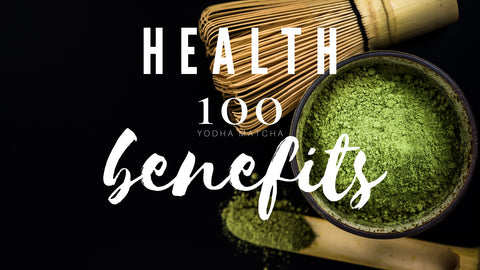Brief History of Matcha
A Brief History of Matcha
Today, matcha is famous for its brilliant green powder, health-giving properties and ritualized drinking. Creating this unique beverage took many centuries, and has deep roots in the history of both China and Japan.
China – Birthplace of Tea
Tea has been drunk in China for millennia. Legend has it that a dead leaf fell from a bush into water that had been boiled for Shennong, the first emperor – he liked the refreshing taste and uplifting effect and tea as we know it was born.
It soon became very different. Dried and ground leaves were compressed into bricks for ease of transportation when trading – in fact, these bricks were even used as a currency. To prepare, a piece was broken off and toasted over fire to enhance the flavor. It was then ground into a fine powder and whisked into a froth with hot water – very similar to matcha today.
At this point, only Buddhist monks and the aristocracy were lucky enough to enjoy this precious drink. Fortunately, in the eighth century tea shops opened and it became an everyday necessity for all.
Japan – Birthplace of Matcha
It was in Japan, however, that matcha culture was born. Three monks in particular had a huge influence.
Eichu
In the early Heian period (794-1185), Japanese monks travelled to China, bringing back both green tea seeds and an enhanced understanding of Buddhism. One, Eichu, served tea to Emperor Saga at his temple in Kyoto – the powerful man was very impressed and ordered it to be grown extensively in the surrounding area. He also established tea gardens in Kyoto itself for the court physicians to use. At this point, similar to earlier in China, tea was enjoyed mostly by monks and in imperial rituals.
Eisai
Eisai is credited with introducing matcha as we know it to Japan. Having spent a large portion of his life in China, he returned permanently to his home country in 1191, carrying a pouch of matcha seeds new to Japan, and a sound knowledge of Buddhist tea preparation rituals. Planting these seeds in the grounds of his temple proved to be a transcendent experience – as the plants grew, so did his understanding of Zen. He became fascinated by how green tea complemented Zen in its ability to simultaneously energize and calm the mind. In his book, the Kissa Youjyouki (Health Benefits of Tea), Eisai says:
‘Tea is the ultimate mental and medicinal remedy and has the ability to make one’s life more full and complete.’
We certainly agree with him here at Yodha!
Other monks continued his explorations, developing a new cultivation process by shading the leaves with reeds and straw for up to three weeks before hand-picking. They then dried, deveined and destemmed the leaves to create a bright green, ultra-fine powder to be frothed with a special matcha whisk. If that sounds familiar, it’s because it’s the ceremonial matcha we know and love today.
At Yodha, all our ceremonial grade matcha is grown by masters using this exceptional, nutrition-enhancing method. If you’ve ever asked yourself, where does the unique matcha flavor come from, it’s the smooth, energizing flavor produced by this historic process.
Sen no Rikyu
By the sixteenth century the joy of matcha had spread to all social classes. People would gather for blind tastings, a bit like wine tasting today, and matcha drinking became ritualized. Zen student Murata Juko gathered several strands of tea ritual into a process with three main elements: cultivation, culture and ceremony.
It was Zen Master Sen no Rikyu who had the greatest influence, however. He developed and popularized Sado (literally ‘Way of Tea’) to such an extent that he is now the most revered historical figure in Green Tea Ceremony. He looked at all aspects, including method, utensils, and even the architecture of the teahouse itself. Ultimately, he created the four pillars of the ceremony:
Wa – harmony
Kei – respect
Sei – purity
Jaku – tranquility
He also founded two underlying principle. Wabi relates to the inner life and the deliberate simplicity of daily living. Sabi, meanwhile, focuses on the outer life, the beauty of the old and faded, and the possibility of spiritual empowerment through understanding the importance of emptiness. Very Zen. If you want to learn more and try it out yourself, we can provide you with a Matcha Starter Kit.
He is now one of Japan’s great cultural figures and is much quoted. One observation is particularly resonant to matcha:
“When you hear the splash of the water drops that fall into the stone bowl you will feel that all the dust of your mind is washed away.”
Absolutely, we sure do agree! Whisk yourself a cup today.




